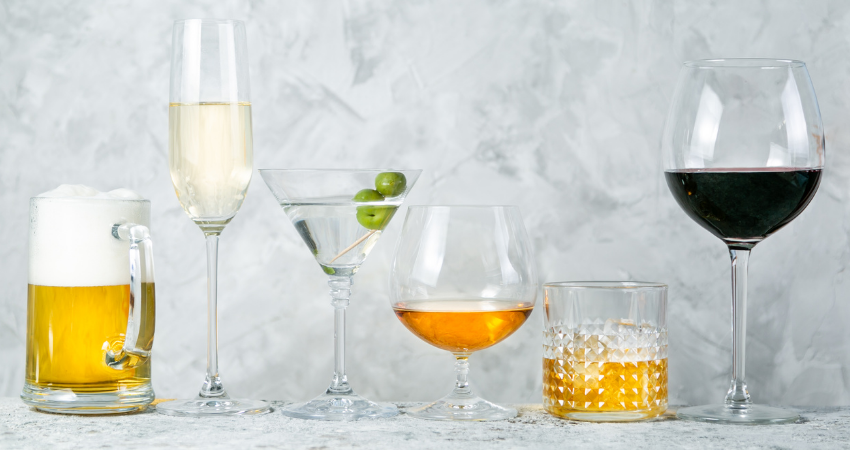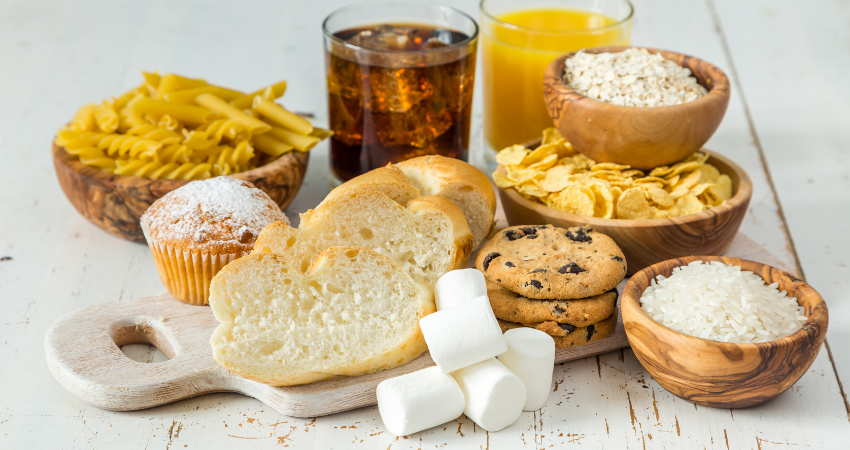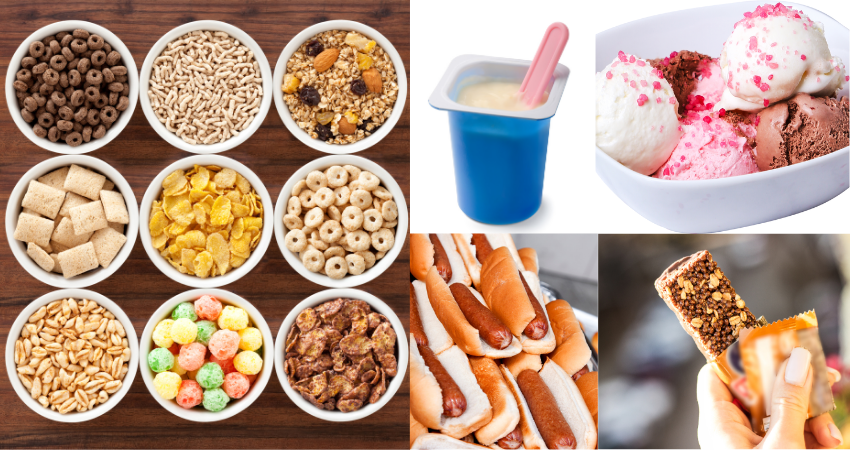There are many steps toward breast health that you can take; for example, moving your body daily; sleeping 7 to 9 hours every night; using non-toxic personal care and household products; doing regular breast self-exam, engaging in positive self-talk and managing stress perception. However, I am going to focus on food and drink that you can avoid or include RIGHT NOW that can significantly support breast health.
The Big 3 | Avoid or Minimize
1. Alcohol

Many women remain unaware that alcohol is a significant breast cancer risk factor.
Depending on dose, alcohol consumption accounts for up to 11% of breast cancer cases in women (29).
In fact, a recent British Medical Journal study, conducted among female patients of mammogram facilities and breast clinics—as well as staff—in the U.K., found that only 19.5% of female patients (and 48.5% of staff) were able to identify alcohol as a breast cancer risk factor (30)!
Alcohol is not a health food—especially for women. Back in 1988, the World Health Organization (WHO) classified alcohol as a Group 1 (human) carcinogen (31).Research (over 30-plus years) establishes a strong causal link between alcohol and breast cancer.
Heavy drinking can also increase breast cancer risk in men. Excess alcohol can hurt the liver, which helps balance sex hormones.
Men with liver disease (like cirrhosis) may end up having higher levels of estrogen, increasing their risk of developing breast cancer (32).
Compared to other organs, the female breast is more vulnerable to the carcinogenic effects of alcohol. Women metabolize alcohol differently than men: they absorb it more quickly, and alcohol takes longer to break down and exit their bodies. As a result, alcohol of any kind (beer, wine, spirits) can increase estrogen levels and increase risk of hormone receptor-positive breast cancer. Alcohol damages DNA in cells, which also increases breast cancer risk (33).
Disturbing trends: Girls, Women and Alcohol
Across the board, alcohol disorders and alcohol abuse among women—and girls—have risen in recent years.
Consider the following:
Among adolescents, aged 12-17, more than double the amount of girls (4.7%) than boys (2.2%) had alcohol use disorder (AUD), according to the 2021 National Survey on Drug Use and Health, or NSDUH (34).
» Among those aged 12 to 20, 12% of males and 11.9% of females reported “binge drinking”, a pattern of drinking alcohol that brings blood alcohol concentration to 0.08%—or more. This blood alcohol concentration level is typically reached after consuming 4 or more alcoholic drinks for females and 5 or more alcoholic drinks for males on the same occasion, typically within 2 hours—or less (35).
» 1 in 5 high school girls binge drinks (36).
Approximately 13% of adult women report binge drinking. Among this group, 25% binge-drink weekly, and 25% will consume at least 6 alcoholic drinks during one binge drinking occasion (37).
» Approximately 1 in 2 women of child-bearing age (i.e., aged 18–44 years) drink alcohol; and, among those (aged 18 to 44) who consume alcohol, 18% binge drink (38).
Some consequences of chronic excess consumption of alcohol?
Liver disease. Cognitive decline. Heart damage. Cancer of various types: mouth, throat, esophagus, liver, colon and, of course, breast cancer (39).
Specific to women, reproductive health consequences may include: irregular menstrual cycles. Increased risk of infertility, miscarriage, stillbirth and premature delivery.
One study, conducted on healthy, pre-menopausal (regularly menstruating) women, aged 18-44, recorded increased levels of hormones—estrogen, testosterone and luteinizing hormone—after participants consumed just one alcoholic drink! Hormone levels increased, including total estradiol by 5.26%; free estradiol by 5.82%; total testosterone by 1.56%; free testosterone by 1.42%; and luteinizing hormone by 6.18% (40).
On the other hand, binge drinking, defined as consuming 4 or more alcoholic drinks (for women), was associated with a dramatic increase in estrogen levels: total estradiol increased by 64.35% and free estradiol increased by 63.53% (41).
How much is “too much”?
It doesn’t take much!
There is a 7 to 10% increase in breast cancer risk for each 10 grams of alcohol (less than 1 drink) consumed daily by adult women; this applies to both pre-menopausal (women who have regular periods) and post-menopausal women who no longer menstruate (42).
» Compared to women who do not drink at all, women who have 3 alcoholic drinks per week have a 15% higher risk of breast cancer. Experts estimate that the risk of breast cancer goes up 10% for each additional drink woman regularly have each day (43).
Support breast health: Say “no” to alcohol OR limit to 2 alcoholic drinks— or less—per week, as recommended by breastcancer.org. Assess your relationship with alcohol: is it your main (or only) go-to for coping with stress or to unwind? Try swapping alcohol out for mineral water. Consider doing a DIY 7-Day Body Reset Cleanse. If you regularly consume alcohol, support liver detoxification.
2. Sugar

A high sugar diet, which includes simple sugars, refined grains and refined starch carbohydrates, is associated with increased breast cancer risk.
In a 2016 study, researchers found that when mice were fed high-sugar diets, specifically sucrose or fructose, 50 to 58% of these mice developed breast cancer tumor; they also had significantly more tumors on their lungs, suggesting that high sugar consumption accelerates breast cancer spreading elsewhere (44).
Regularly eating high sugar foods leads to overweight and obesity. The more fat cells you have, the more estrogen you make; this contributes to estrogen dominance—and a greater risk of breast cancer.
Eating high sugar foods also raises your blood sugar—in a big way. Your pancreas releases the hormone insulin to bring your blood sugar back down. Insulin escorts sugar (as glucose) out of your bloodstream and into the cells of your liver and muscles. When you keep eating sugar, your liver and muscle cells eventually run out of room to store glucose.
Insulin resistance happens when your cells get “burned out” from insulin always “knocking on their door”, asking if glucose can enter. When your cells stop responding to insulin, this is called insulin resistance. From this point, any excess glucose typically ends up being stored in fat cells, mostly around your waist. As a result, you can end up having high insulin and high blood sugar levels.
Studies show that excess body fat, high estrogen and high insulin levels increase your risk for breast cancer. Higher insulin means that your body becomes efficient at storing fat. Again, excess body fat means that you produce more estrogen. Higher insulin levels are also thought to help breast cancer cells develop and grow.
Support breast health: Eat more quality protein and high fiber vegetables. Eat less white starch carbs (e.g., rice, pasta, bread,.flour-based foods, etc.). Consume more home-cooked whole foods; eat less processed foods. Avoid colas, sodas, “flavored” drinks; commercial fruit juices; and beverages with added sugars. Replace artificial sweeteners with natural sweeteners, like maple syrup, coconut sugar or raw honey—and use sweeteners judiciously.Consider doing a DIY 7-Day whole foods-based cleanse. Invest in a one-time Comprehensive Wellness Assessment as a launchpad for making different food and lifestyle choices.
3. Ultra-processed foods, including refined carbohydrates

Processed foods are convenient—and they aren’t all bad. Especially if they are minimally processed: pre-cut vegetables, bagged lettuce, roasted nuts, frozen vegetables or canned tuna. Americans eat plenty of processed foods; however, about 60% of processed foods consumed are ultra-processed.
Ultra-processed foods are “foods” that undergo multiple industrial processes, like hydrogenation, extrusion, and molding, to create the final product. They contain many added ingredients not used in traditional cooking (e.g., salt, sugar, artificial sweeteners, highly refined oils, unhealthy fats, artificial colors, preservatives, flavorings, emulsifiers, etc.) to manipulate appearance, taste and texture and to extend shelf life.
Designed so that you will crave them, ultra-processed foods include: store-bought breads and buns, breakfast cereals, fruit yogurt, ice cream, packaged soups, snack foods, cookies, chips, soda, energy drinks, energy bars and French fries, to name a few.
Eating ultra-processed foods can increase a woman’s risk of breast cancer by 11%, according to a 2018 study published in the British Medical Journal.
When the dietary intake of 105,000 French male and female participants was analyzed, researchers found that, for both men and women, 18% of their diet consisted of ultra-processed foods. Each 10% increase in ultra-processed foods raised overall cancer rate by 12%. And, for women, the risk of breast cancer, specifically, increased by 11%. Sugary ultra-processed foods were most strongly associated with increased breast cancer risk (45).
Support breast health: Eat fresh, whole foods. Cook simple, real food meals from scratch instead of eating ready-to-heat prepared meals.For anti-inflammatory recipe inspiration, click here, here and here. Reduce your toxic load with my DIY 7 Day Body Reset Cleanse. Consider doing a one-time Food & Lifestyle Review for insights on where you can start making healthier choices.
Continue Reading About Breast Cancer Prevention (below):
Your Breasts: What You Need to Know (Part 1)
Understanding Estrogen: How It Affects Breast Health (Part 2)
Better Breast Health: Eat These 3 Foods (Part 4)
Sources
29, 30 BMJ Open. June 2019.
31 International Agency for Research on Cancer.
32 American Cancer Society
33 BreastCancer.org
34 NIH: National Institute on Alcohol Abuse and Alcoholism. Alcohol Use Disorder. 2023.
35 NIH. Alcohol’s Effects of Health. Binge Drinking.
36 Drink: The Intimate Relationship Between Women & Alcohol. Ann Dowsett Johnson. Harper Wave. 2013.
37, 38, 39 Centers for Disease Control and Prevention (CDC).
40, 41 Schliep KC, Zarek SM, Schisterman EF, Wactawski-Wende J, Trevisan M, Sjaarda LA, Perkins NJ, Mumford SL. Alcohol intake, reproductive hormones, and menstrual cycle function: a prospective cohort study. Am J Clin Nutr. 2015 Oct;102(4):933-42.
42 Women’s Health. January 1, 2015
43 BreastCancer.org
44 Cancer Research. Jan. 2016
45 British Medical Journal. February 14, 2018


